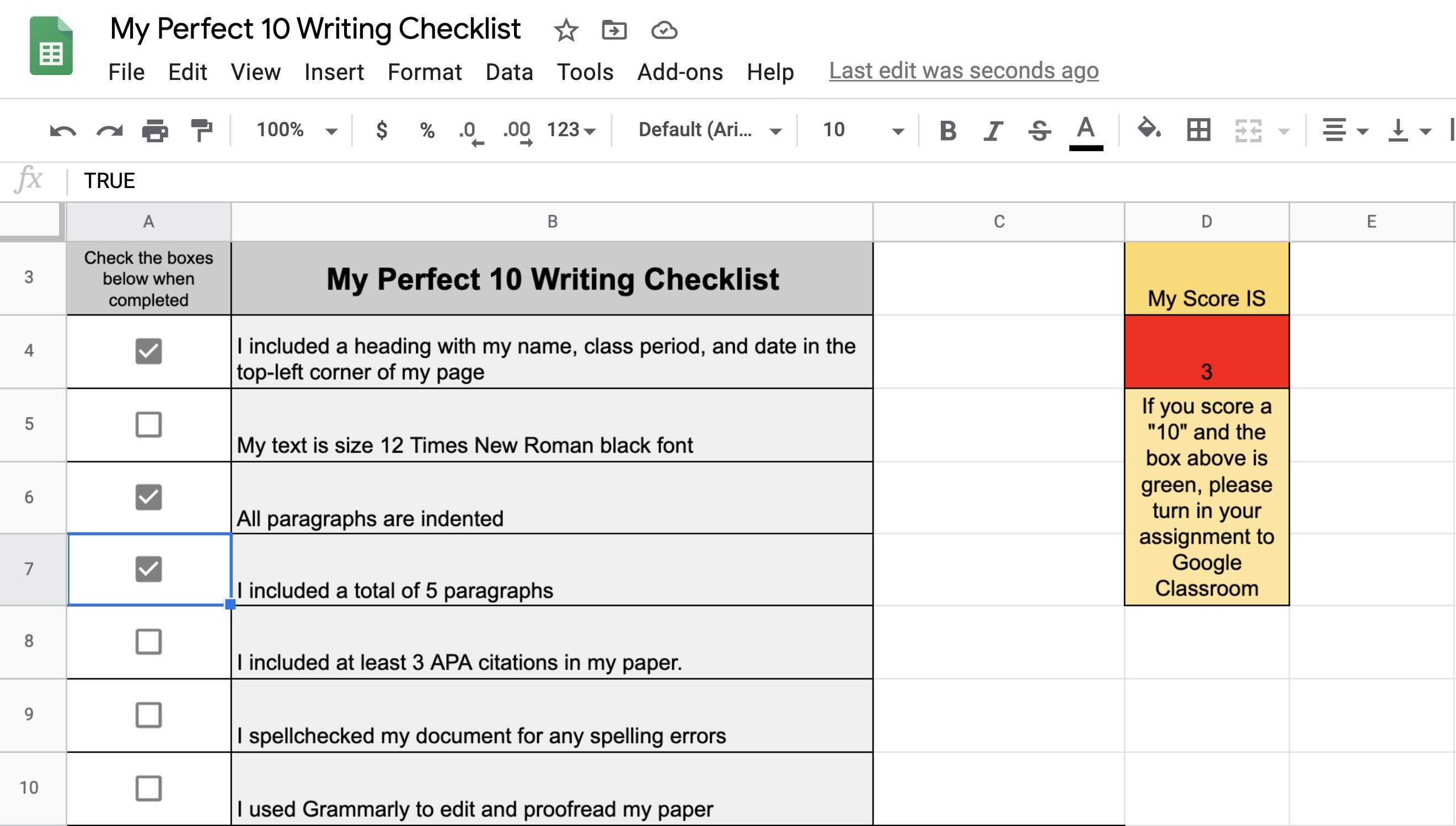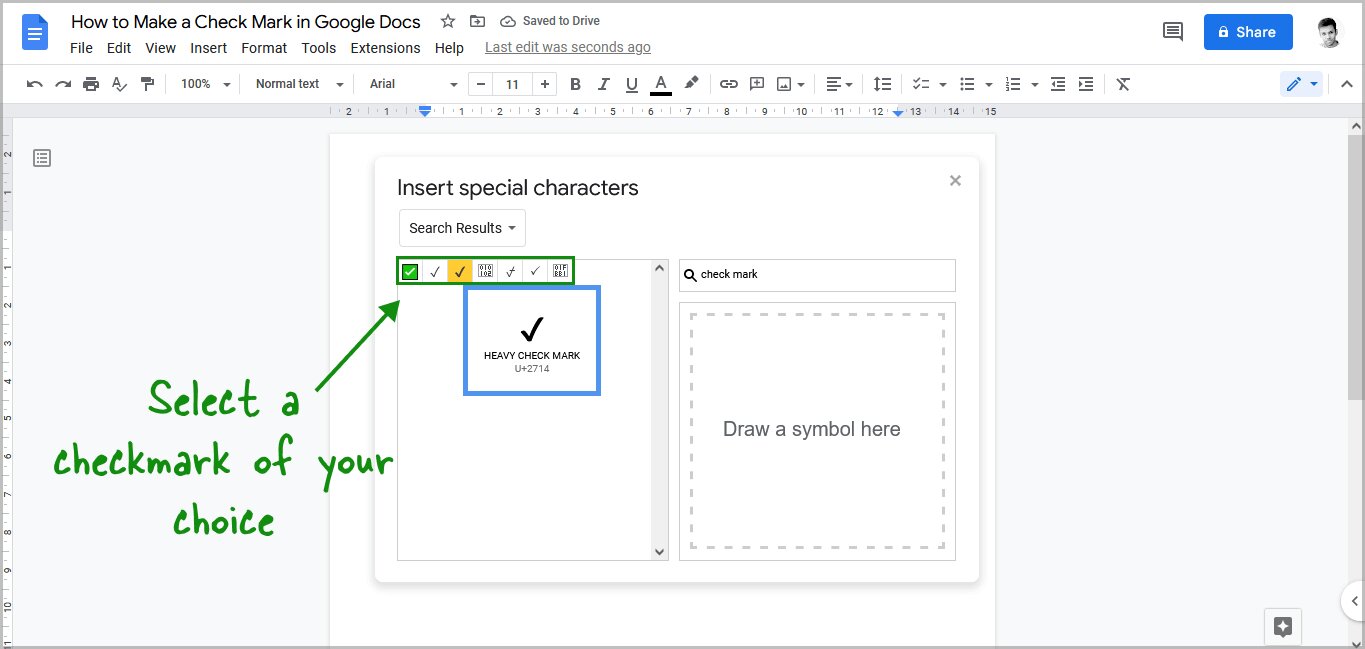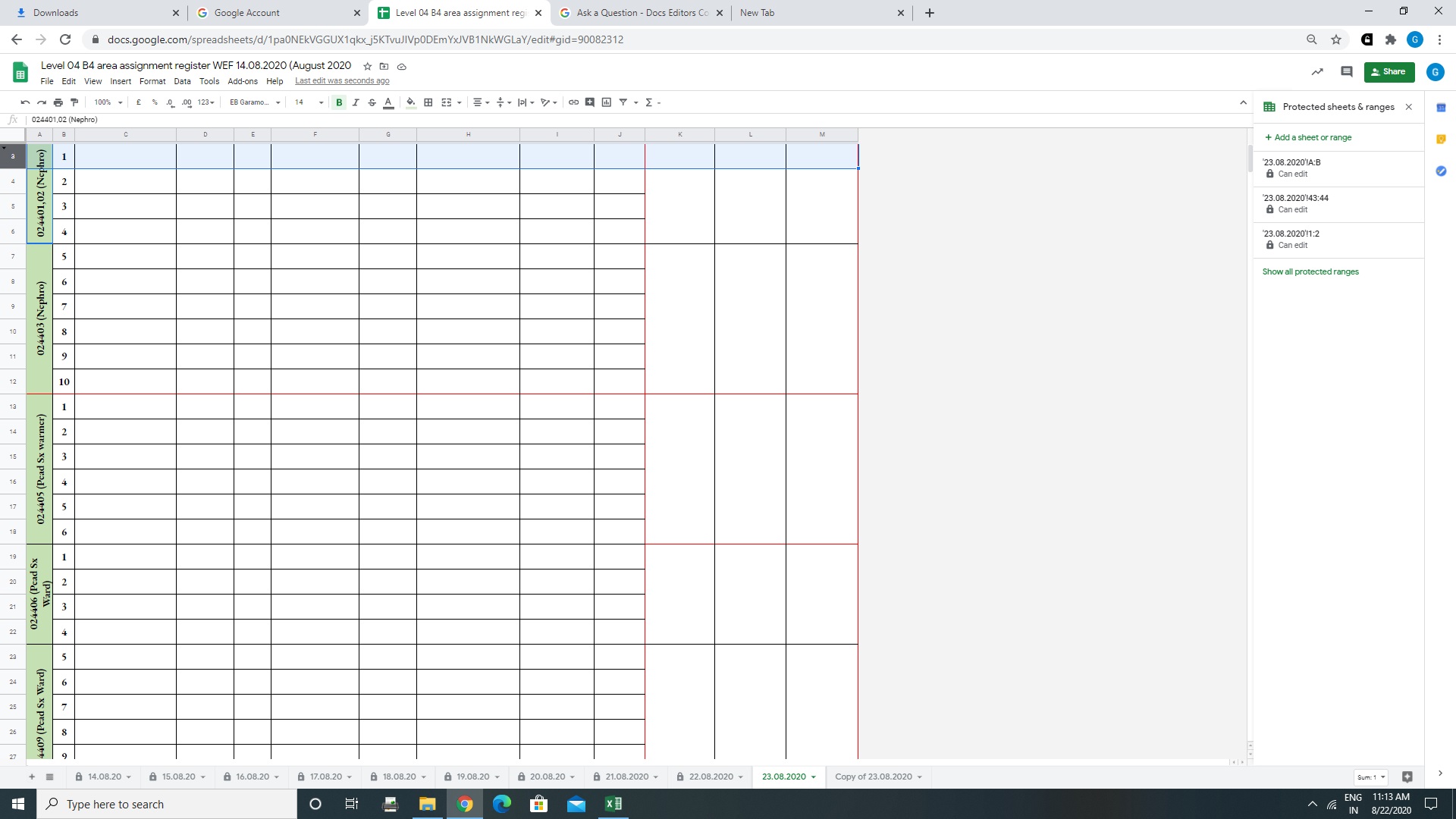Introduction
Welcome to this tutorial on how to make a checklist in Google Sheets! A checklist is a tried and true method for keeping track of tasks, making sure nothing is forgotten, and staying organized. Google Sheets, with its powerful features and easy collaboration capabilities, is an excellent tool for creating and managing checklists.
Whether you need a simple to-do list, a project management checklist, or a shopping list, Google Sheets provides the flexibility to customize and create checklists to suit your needs. Plus, with the ability to access and edit your checklists from anywhere, on any device, you’ll never miss a beat.
In this tutorial, we’ll walk you through the steps of setting up Google Sheets for checklist creation, adding items to your checklist, organizing and formatting your checklist, and sharing it with others. By the end of this tutorial, you’ll have all the tools you need to create and manage your own checklists efficiently and effectively.
So, whether you’re a student trying to keep up with assignments, a professional juggling multiple projects, or just someone who likes to stay organized, let’s dive in and learn how to make a checklist in Google Sheets!
Setting up your Google Sheets
Before we start creating our checklist, let’s make sure we have everything set up correctly in Google Sheets. If you don’t already have a Google account, go ahead and create one. Then, follow these steps:
- Open Google Sheets: On your computer, go to sheets.google.com, or open the Google Sheets app on your mobile device.
- Create a new spreadsheet: Click on the “+” button to create a new spreadsheet.
- Name your spreadsheet: Give your spreadsheet a descriptive name that reflects the purpose of your checklist. For example, “Project Management Checklist” or “Grocery Shopping Checklist.”
- Set column headers: In the first row of your spreadsheet, enter column headers to define the categories or tasks you want to include in your checklist.
- Format your spreadsheet: Adjust the width of the columns, choose fonts and colors, and add any other formatting options that will make your checklist visually appealing and easy to read. You can find these options in the menu at the top of the Google Sheets interface.
Once you have completed these steps, you are ready to start adding items to your checklist. In the next section, we will cover how to do that effectively and efficiently.
Creating a new checklist
Now that you have set up your Google Sheets, let’s create a new checklist. Follow these steps to get started:
- Select a new sheet: At the bottom of your spreadsheet, click on the “+” button to add a new sheet. This will give you a fresh space to create your checklist.
- Name your checklist: Double-click on the “Sheet1” tab at the bottom and enter a name that represents your checklist. For example, “Daily Tasks” or “Weekly Goals.”
- Set up the layout: Determine how you want your checklist to be organized. You can use rows or columns to represent each task or item on your checklist. Choose the option that works best for your needs.
- Add checkboxes: In the first column or row of your checklist, insert checkboxes to indicate whether a task has been completed or not. To do this, go to the “Insert” menu and select “Checkbox.”
- Label your checklist: In the adjacent column or row, enter the labels or descriptions for each item on your checklist. This could be the tasks you need to complete, the items you need to purchase, or any other relevant information.
By following these steps, you will create a basic checklist structure. However, feel free to customize it further based on your specific requirements. You can add additional columns for due dates, priority levels, or any other relevant details that will help you stay organized.
Now that you have created your checklist, let’s move on to the next section to learn how to add items to your checklist.
Adding items to your checklist
Now that you have your checklist set up in Google Sheets, it’s time to start adding items. Follow these steps to efficiently populate your checklist:
- Select a cell: Click on a cell where you want to add an item to your checklist.
- Enter the item: Type in the task, item, or description that you want to include in your checklist.
- Copy and paste: If you have multiple items to add and they follow a similar format, you can save time by copying and pasting. Select the cell with an existing item, copy it, and paste it into new cells to quickly populate your checklist.
- Drag down: Alternatively, if you have a list of items to add, you can select the cell with the first item and drag down the fill handle (a small square at the bottom right corner of the cell) to automatically populate the checklist with the remaining items.
By following these steps, you can quickly add items to your checklist without the need for manual typing each time.
To keep your checklist organized and visually appealing, you can also consider using formatting options such as bolding important tasks, changing font colors, or adding borders to separate different sections of your checklist.
Now that you have added items to your checklist, let’s move on to the next section to learn how to organize your checklist effectively.
Organizing your checklist
Organizing your checklist in Google Sheets is essential for easy readability and efficient task management. Here are some tips to help you effectively organize your checklist:
- Group related tasks: Arrange your checklist items into logical groups or categories. For example, if you have a project management checklist, you can group tasks by phases or departments.
- Use indentation: Indentation can help visually distinguish subtasks or nested items within your checklist. You can do this by using the “Indent” option in the toolbar or by manually spacing the text.
- Add additional columns: Consider adding extra columns to your checklist to include additional information such as due dates, assigned personnel, or status updates. This will provide more context and help you track progress easily.
- Sort and filter: Utilize the sorting and filtering options in Google Sheets to reorder your checklist based on specific criteria. This can be useful for prioritizing tasks or focusing on particular items.
- Add formulas: If you want to include automatic calculations or summaries in your checklist, you can use formulas like SUM, AVERAGE, or COUNT. These formulas can help you track progress or quantify completed tasks.
Remember, the goal is to create a checklist that works best for your specific needs and workflow. Experiment with different organizational techniques and formats to find what suits you. Don’t be afraid to customize and adapt your checklist as you go. It’s all about finding a system that helps you stay organized and productive.
Now that you have organized your checklist, let’s move on to the next sections to learn about additional features you can utilize to enhance your checklist’s functionality.
Applying conditional formatting to your checklist
Conditional formatting is a powerful feature in Google Sheets that allows you to dynamically change the formatting of cells based on specific conditions. By applying conditional formatting to your checklist, you can highlight important tasks, visually track progress, or draw attention to upcoming deadlines. Here’s how you can do it:
- Select the cells: Choose the range of cells that you want to apply the conditional formatting to.
- Open the conditional formatting menu: Go to the “Format” menu and select “Conditional formatting.”
- Select a rule: Choose from the pre-defined rules available or create a custom rule. Common examples include highlighting tasks that are overdue, marking completed tasks with a different color, or flagging high-priority items based on specific criteria.
- Set the formatting: Specify the formatting options for the selected rule, such as font color, fill color, or text style.
- Apply the conditional formatting: Click “Done” to apply the formatting to the selected cells.
By using conditional formatting, you can visually enhance the appearance of your checklist and make it easier to interpret at a glance. This feature can save you time and effort by automatically highlighting important information without the need for manual intervention.
Experiment with different conditional formatting rules and combinations to find the style that works best for your checklist. Remember, the goal is to make your checklist visually appealing and easy to understand.
In the next section, we’ll explore another useful feature of Google Sheets – data validation – and how you can utilize it in your checklist.
Using data validation for your checklist
Data validation is a powerful tool in Google Sheets that allows you to control the type and range of data entered into specific cells. By using data validation in your checklist, you can ensure that only valid and expected values are inputted, minimizing errors and maintaining data integrity. Here’s how you can utilize data validation:
- Select the cells: Choose the cells where you want to apply data validation.
- Open the data validation menu: Go to the “Data” menu and select “Data validation.”
- Choose the validation criteria: Select the validation rule that best fits your checklist’s requirements. You can have options like a dropdown list, a predefined list of values, a number range, or a custom formula.
- Set the options: Configure the validation settings based on your chosen validation criteria. Specify the allowed values, error messages, and whether to reject invalid input or show a warning.
- Apply data validation: Click “Save” to apply the data validation to the selected cells.
By using data validation in your checklist, you can maintain consistency and accuracy in data entry. For example, if you have a status column in your checklist, data validation can ensure that only specific statuses like “In Progress,” “Completed,” or “Not Started” are entered, preventing incorrect or inconsistent entries.
Data validation can also be helpful in dropdown lists, allowing users to select from a predefined set of options and reducing the risk of typing errors. This is particularly valuable when collaborating with others on the same checklist.
Experiment with different data validation options to find what works best for your checklist. This feature provides an extra layer of control and accuracy, making your checklist more reliable and efficient.
In the final section, we will explore how you can share your checklist with others and collaborate effectively.
Sharing your checklist with others
Google Sheets allows you to easily share your checklist with others, enabling collaboration and real-time updates. Here’s how you can share your checklist:
- Open the sharing options: Click on the “Share” button located at the top right corner of the Google Sheets interface. This will open the sharing settings.
- Add collaborators: In the sharing settings, enter the email addresses of the individuals you want to share the checklist with. You can also choose whether they can view, comment, or edit the checklist.
- Set permissions: Customize the permissions for each collaborator, specifying whether they can make changes, invite others, or only view the checklist.
- Notify collaborators: Optionally, you can send an email notification to your collaborators to let them know you have shared the checklist with them.
- Collaborate in real-time: Once you have shared the checklist, collaborators can access and edit it simultaneously. Changes made by one person are instantly updated for everyone else viewing the checklist.
By sharing your checklist, you can work seamlessly with others, whether it’s for personal, academic, or professional purposes. Collaborators have the flexibility to add, modify, or check off items, ensuring everyone remains on the same page.
In addition to sharing with specific individuals, you can also generate a shareable link that allows anyone with the link to access the checklist. However, be cautious when using this option, as it may compromise the privacy or security of your checklist if shared with unintended parties.
Now that you know how to share your checklist, you can collaborate effectively and increase productivity by working together in real-time.
Finally, in the next section, we will wrap up this tutorial by summarizing what we have learned and offering some concluding thoughts.
Conclusion
Congratulations! You have learned how to create, organize, and enhance a checklist in Google Sheets. Checklists are an invaluable tool for staying organized, managing tasks, and ensuring nothing falls through the cracks. With Google Sheets, you have the power to create dynamic and collaborative checklists that can be accessed and edited from anywhere, at any time.
Throughout this tutorial, we covered the essential steps of setting up Google Sheets, creating a new checklist, adding items, organizing the checklist, and applying conditional formatting and data validation. We also explored how to share your checklist with others for seamless collaboration.
Remember to be creative and flexible when designing your checklist. Customize the layout, incorporate conditional formatting to highlight important tasks, and use data validation to maintain accuracy. Tailor your checklist to suit your needs and preferences, and don’t be afraid to experiment with different features and techniques.
Now that you have mastered the art of checklist creation in Google Sheets, you can apply these skills to various aspects of your personal and professional life. Whether it’s managing projects, tracking assignments, organizing events, or making shopping lists, Google Sheets offers the versatility and robustness to handle it all.
So, start creating your own checklists today and enjoy the benefits of increased productivity and organization. Harness the power of Google Sheets and take control of your tasks, one checklist at a time!

























